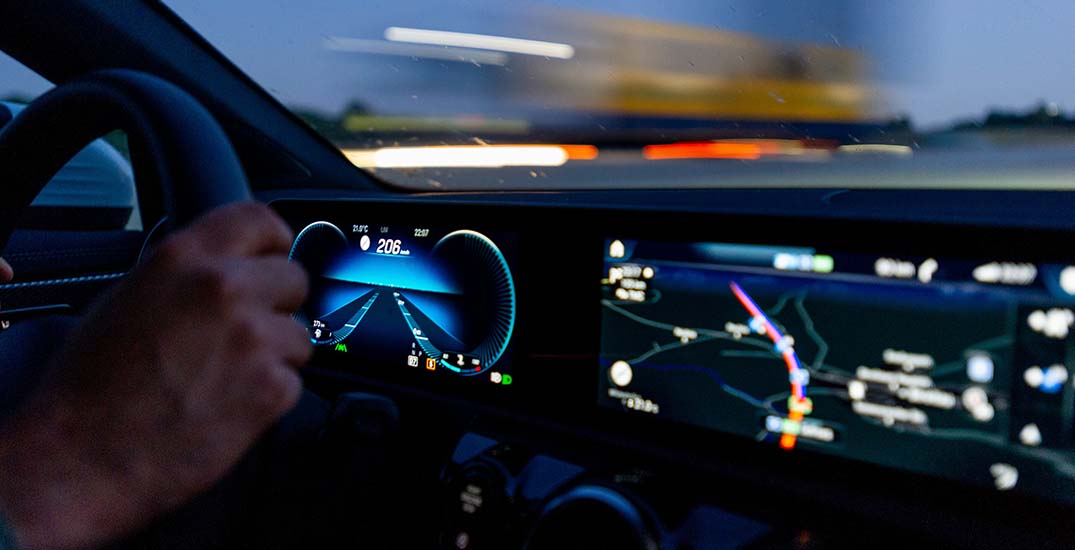Over the next 10 years, electrification will change what powers cars, and automation will change how they are driven – but one of the biggest opportunities is connectivity and software definition, which will change how cars are monetised.
This was blindingly apparent at CES 2024, where it felt like “autonomous”, “connected”, “AI” and “software-defined vehicle” were prerequisite buzzwords for exhibitors to get through the door, writes Dr James Jeffs, senior technology analyst at IDTechEx.
IDTechEx’s reports, “Future Automotive Technologies 2024-2034: Applications, Megatrends, Forecasts” and “Connected and Software-Defined Vehicles 2024-2034: Markets, Forecasts, Technologies” found that connected and software-defined vehicles have the greatest potential for growth in the automotive space.
The reports found that these technologies will grow at a compound annual growth rate of 21,1% between 2024 and 2034, reaching a value of $700-billion. That’s around $400 to $500 per vehicle on the road.
At CES this year, IDTechEx saw where some of this revenue will be coming from.
Firstly, there will be the AI assistants in the cabin. This was a big focus from players like Mercedes, Amazon Web Services (AWS), and Qualcomm.
The early functionality of these will be a more natural interaction with the car’s systems. Voice commands in cars are nothing new and have progressed over the years from an unusable gimmick to something that some readers will now be thinking, “Oh yeah, my car does have voice commands”. Even the best systems today are slightly clunky and require the user to memorise specific nomenclature and ways of phrasing requests.
Over the past few years, the world has seen how much AI has grown, with ChatGPT proving that machines can replicate normal human conservation.
At CES, IDTechEx saw how this can contribute to the vehicle experience. Qualcomm and AWS both had demonstrator interfaces that had been trained on the vehicle’s owner manual.
This is an ideal first application as customers can ask about features on the vehicle and get an understandable explanation from the AI assistant. For example, the driver could ask the assistant, “Why is the engine turning off when the car is stopped?” and the assistant can explain that this is designed to save fuel and let the driver know how to turn it off if they desire.
Another application is simply interacting with the vehicle’s settings. Lots of cars already have voice control systems that can change the climate control settings, but AI assistants offer a far more natural way of doing this. Drivers won’t need to hone their commands, and use specific words; they can say “I’m cold”, “turn the heat up”, “set the temp to 20 degrees” or “temp to 70 degrees” and the car will make the change accordingly.
AI assistants will likely come as a subscription service, though, especially since they tend to rely on connectivity.
AWS’s AI assistant for the car is a cloud service, connecting to AWS servers to execute the AI functionality. Qualcomm’s latest chips incorporate built-in AI accelerators, allowing the vehicle to offer some AI features even when offline. However, it will likely require some connection for regular updates and requests that require accessing data that is not stored on the vehicle, such as calendar information or Wikipedia articles.
Either way, AI assistants will very likely be a premium service, perhaps with the first year for free, to entice customers and demonstrate value.
The AI examples discussed focused on interactions with the vehicle, but combined with connectivity and third-party application stores, the possible applications of the AI assistant are unbounded.
A basic application of this is scheduling car servicing. When the vehicle gets close to its service interval, the AI assistant can access the dealership’s service center availability, then offer the driver available slots to get their vehicle service, let them know the cost of different packages, and even schedule and pay for the appointment.
In-vehicle payment will be another game-changing technology for the car market. These systems can use biometric security, powered by the in-cabin infrared and regular cameras, to authorise payments.
IDTechEx saw a live demonstration of this at CES 2024. In one of the demonstration booths, an exhibitor pressed to make a purchase on a mock-up infotainment system; the camera showed their face for verification, and then the bank transaction could be seen on a separate screen. This wasn’t a faked example or charade, but real money moving between accounts, processed by what would be a car.
The example IDTechEx saw at CES was demonstrating how a user could pay for an upgrade to access additional functionality, the feature-as-a-service model. This currently exists with companies like Tesla, BMW, and others fitting hardware to their vehicles with its full functionality locked behind a paywall.
Currently, the driver needs to pay to access these features through a smartphone app or online. With AI assistants, connectivity, and in-car payments, the game changes. A driver could say “I’m cold” and the AI assistant could recommend subscribing to a package which includes heated seats. Connectivity and AI payments will allow the purchase to be completed.
This is how AI, connectivity, software-defined vehicles, features-as-a-service, and in-car payments all come together to generate hundreds of dollars’ worth of new revenue per vehicle in 2034.

